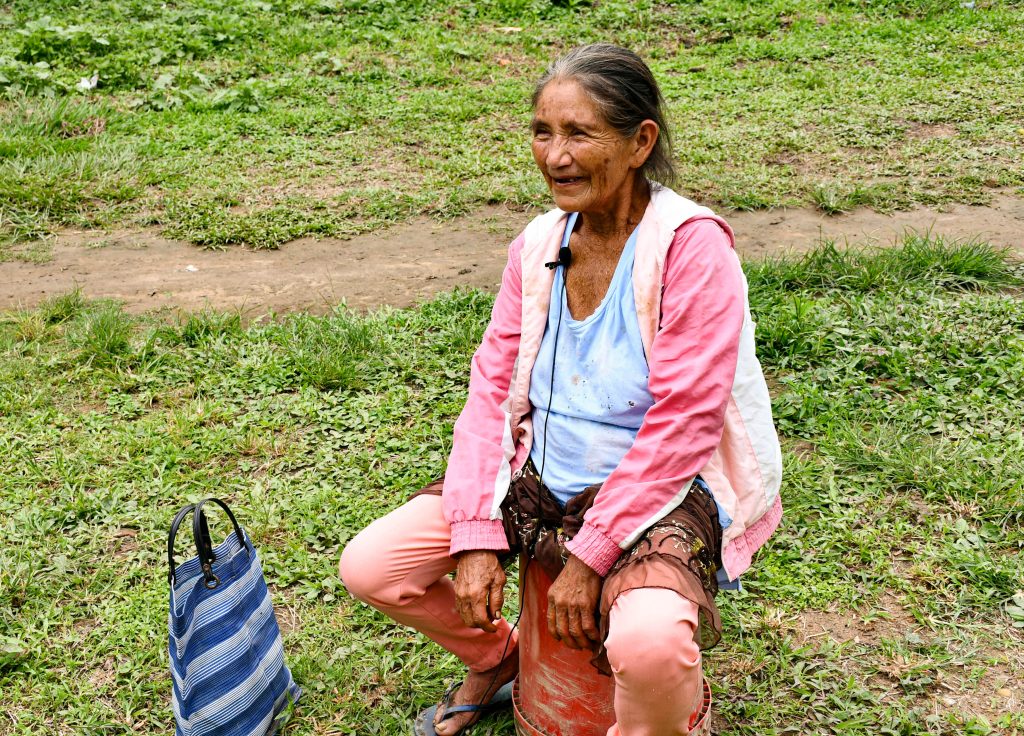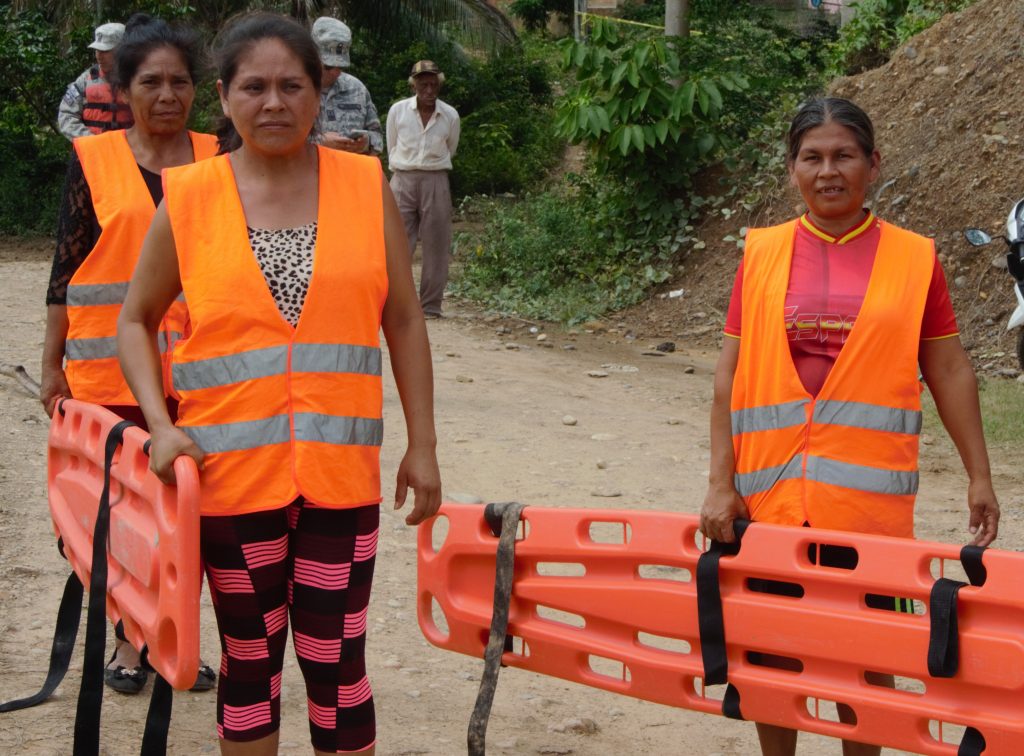Emergencies and disasters do not affect men and women equally; according to the UNDP, women are 14 times more likely to die than men in the event of a disaster. As a member of the Zurich Flood Resilience Alliance, Practical Action is working with communities in Bolivia to decrease the gender gap before disaster strikes.
Women’s voices are still not being heard
Disaster risk management (DRM) has historically promoted greater involvement of men than women; a trend that is still evident in many communities today. In rural Bolivia, women dedicate an average of four hours to agricultural activities and seven hours to domestic activities each day, while men dedicate 5.4 hours to agriculture and only 1.4 hours to domestic tasks per day. As a result, women face difficulty in participating in training activities because of gendered labour roles.
Melvi Mendoza, aged 70, lives in Capaina, San Buenaventura; she is a voice of the history of this Tacana indigenous community, where women were severely impacted during the 2014 floods. Whilst men were responsible for going out to seek help for the recovery of communities, many women stayed in their homes to shelter their animals in the guarachas (handmade infrastructure in homes at high altitude designed to shelter animals and supplies) and struggled to find dry firewood for communal cooking pots. “You cannot just grab your things and go; you must stay there. If it’s cold you get sick. My pigs drowned and I couldn’t do anything” says Melvi. Small animals provide income for women in indigenous communities; in the face of a flood, they are often forced to sell them at low prices to meet immediate needs.

The floods left us without corn, rice, cassava and wiped out the banana and citrus trees. We had to leave in boats along the road on the highway as we were evacuated by the people of the municipality.
Noemi Chávez, aged 39, past president of Puerto Yumani, Rurrenabaque
The critical role of women in disaster risk management
Women can and do play a critical role in DRM – and when they do, they improve resilience for the whole community. Results from the Flood Resilience Measurement for Communities (FRMC) tool found that, in the seven communities Practical Action works with, municipalities like Rurrenabaque and San Buenaventura had high resilience amongst Tacana indigenous communities.
In these communities, recovery, reconstruction, preparedness, and resilience are built on Sororidad (directly translating to “sisterhood” and referring to the sisterhood shown in the face of discrimination and violence coming from a patriarchal culture) and common values, with a shared practical understanding of an emergency and the community’s needs.
During the 2014 floods, women organized themselves to access food, recover family gardens (and later productive plots which are more extensive and located away from their homes), and take care of the most vulnerable people.
As with many communities that Practical Action work with, men often control the formal-decision making structures and as a result, women feel limited in participating or expressing their opinions. Through initiatives such as brigades, capability training workshops and field schools, Las Yumani (referring to female leaders and authorities of Puerto Yumani, most of them part of the brigades) can come together as a group and increasingly strengthen their voice and position in the face of annual flood disasters.
Daniela Mamio, brigades and community leader in Capaina, takes on a leadership role within her community. Daniela has two small children, but this does not stop her from participating in community brigade training. Women like Daniela and Noemi have faced negative reactions when first working in a community because of the traditional concept of gender roles in risk management. Through hard-work, determination and empowerment, these women are an inspiration to others, and more women have been influenced to work in these leadership positions.

There’s still progress to be made
While Practical Action recognises the role of women in disaster risk management and in building the resilience of their communities, we know that this role is still subject to structural inequalities that place greater pressure on their productive and reproductive roles in the household.
A conscious approach to programming disaster risk management activities is crucial so that women and marginalized groups are included in spaces that affect their lives, as well as ensuring there is not an additional burden of workload on women or reinforcement of gendered stereotypes. Practical Action is working with communities in Bolivia to decrease the gender gap when disaster strikes and increase flood resilience further still.
We celebrate progress and examples of where women’s inclusion has built resilience, but recognize there is still a long way to go. Stories like Melvi’s and Daniela’s reinforce the need for inclusive approaches in flood resilience work to ensure that no one is left behind in the move towards a more resilient future. We need to consider intersectional approaches to also include other marginalized groups (and beyond treating women as a homogenous group). But we can see that highlighting women as champions in DRM can provide an entry point to wider socio-economic change, and begin conversations on gender norms and social inequalities that drive disaster vulnerability.
See Toolkit for the monitoring and evaluation of productive projects with gender-based approach and The Missing Voices Approach for more details on Practical Action’s gender equality work.

Comments